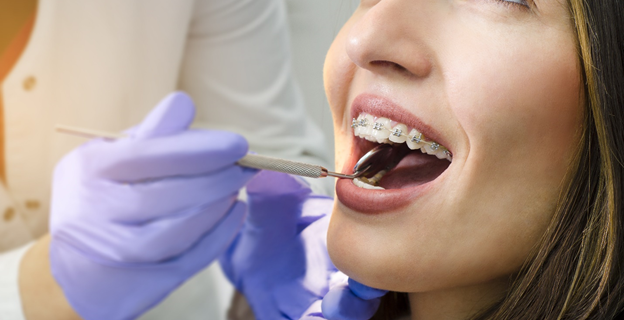Uncover the hidden history of Incognito braces in Weybridge

Misconception and myths
Every year, thousands of Britons are seeking vitally needed orthodontic treatment to achieve a straighter, healthier looking smile. Whilst the numbers of those seeking treatment are rising consistently across the country, there are still a vast number of people out there who are dissuaded from seeking the required orthodontic treatment, out of fear as to how it will negatively impact their outward appearance. This is largely due to misinformation and misconceptions around modern orthodontics, which often evoke imagery of large, cumbersome headgear and lisp inducing braces. This however, couldn’t be further from the truth, as there are numerous forms of discreet orthodontics such as Incognito braces in Weybridge which afford patients the ability to achieve a straighter smile, without any unsuspecting person noticing.
Hidden history
Incognito braces, or lingual braces, were first invented by an orthodontist named Crazen Kurts in 1975. The first patient to undertake the lingual braces process was, surprisingly, a Beverly Hills playboy bunny. After being presented with the option of receiving metal braces, and worrying about how they would negatively impact her modelling career, she turned to Kurts to come up with a discreet solution. In response to this request Kurts first developed his lingual braces design. After the first successful installation of lingual braces, Kurts was then faced with a stream of celebrities, politicians and actors from across the country who all wished to achieve a straighter, healthier looking smile.

Pulling things together
Whilst Kurt’s lingual braces were revolutionary for their time, they were far from perfect, and numerous patients complained about speech problems, and irritation to the insides of their mouths. Throughout the years however the design of lingual braces has been honed, and full use of the tools and methodologies which were afforded to their development through the age of digital process have been harnessed to create a very efficient treatment.
The process of installing modern lingual braces initially consists of a consultation period, during which the patient’s eligibility for Incognito is determined, as well as them receiving information on the positive effects that they can expect Incognito to have on them. Next, if a patient decides to carry on with the procedure, using computer technology a custom made brace will be designed for the patient, maximising comfort and efficiency. As such, it fits snugly over the patient’s teeth, so that when worn it is practically invisible. This may explain why Incognito is so vastly popular within the demographics of teenagers and young adults, as it affords them the ability to undertake essential dental alignment – without attracting any unwanted attention from peers or colleagues. Those who opt for Incognito treatment often find it to have a largely positive impact on their self-confidence and esteem, as it allows them to tackle life head-on, with a smile on their face. All, whilst simultaneously achieving straighter, and healthier looking teeth.

